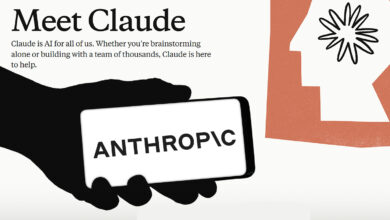WordPress Unpauses Development But Has It Run Out Of Time?
Automattic announced that it is reversing its four-month pause in WordPress development and will return to focusing on the WordPress core, Gutenberg, and other projects. The pause in contributions came at a critical moment, as competitors outpaced WordPress in ease of use and technological innovation left the platform behind.
Did WordPress Need A Four-Month Pause?
Automattic’s return to normal levels of contributions were initially contingent on WP Engine withdrawing their lawsuit against Automattic and Mullenweg, with the announcement stating:
“We’re excited to return to active contributions to WordPress core, Gutenberg, Playground, Openverse, and WordPress.org when the legal attacks have stopped.”
WP Engine and Automattic are still locked in litigation, so what changed?
Automattic suggests that it has reconsidered its place as the future of content management:
“After pausing our contributions to regroup, rethink, and plan strategically, we’re ready to press play again and return fully to the WordPress project.
…We’ve learned a lot from this pause that we can bring back to the project, including a greater awareness of the many ways WordPress is used and how we can shape the future of the web alongside so many passionate contributors. We’re committed to helping it grow and thrive…”
Automattic’s announcement suggests that they realized moving forward with WordPress is important despite continued litigation.
But did Automattic really need a four-month pause to come to that realization?
Where Did The WordPress Money Go?
And it’s not like Automattic was hurting for money to throw at WordPress. Salesforce Ventures invested $300 million dollars into Automattic in 2019 and an elated Mullenweg wrote that this would enable them to almost double the pace of innovation for WP.com, their enterprise offering WordPress VIP, WooCommerce, Jetpack, and increase resources to WordPress.org and Gutenberg.
Mullenweg wrote:
“For Automattic, the funding will allow us to accelerate our roadmap (perhaps by double) and scale up our existing products—including WordPress.com, WordPress VIP, WooCommerce, Jetpack, and (in a few days when it closes) Tumblr. It will also allow us to increase investing our time and energy into the future of the open source WordPress and Gutenberg.”
In the years immediately following the $300 million investment, updates to WooCommerce increased by 47.62% and as high as 80.95% and just a little bit higher for the year 2024. Jetpack continued at an average release schedule of 7 updates per year although it shot up to 22 updates in 2024. The enterprise level WordPress VIP premium service may have also benefited (changelog here).
Updates to the WordPress Core remained fairly unchanged according to the official release announcements and the pace of Gutenberg releases also followed a steady pace, with no significant increases.
List of number of WordPress release announcements per year:
- 2019 – 29 announcements
- 2020 28 announcements
- 2021 26 announcements
- 2022 27 announcements
- 2023 26 announcements
- 2024 30 announcements
- 2025 9 announcements
All the millions of dollars invested in Automattic, along with any other income earned, had no apparent effect on the pace of innovation in the WordPress core.
Survival Of The Fittest CMS
A positive development from Automattic’s pause to rethink is the announcement of a new AI group, modeled after their Performance group. The new team is tasked with coordinating AI initiatives within WordPress’ core development. Like their Performance group, the new AI group was formed after their competitors had outpaced them, so WordPress is once again late in adapting to user needs and the fast pace of technology.
Matt Mullenweg struggled to answer where WordPress would be in five years when asked at the February 2025 WordCamp Asia event. He asked someone from Automattic to join him on stage to answer the question, but that other person also couldn’t answer because there was, in fact, no plan or idea other than the short-term roadmap focused on the immediate future.
Mullenweg explained the lack of a long-term vision as a strategic decision to remain adaptable to the fast pace of technology:
“Outside of Gutenberg, we haven’t had a roadmap that goes six months or a year, or a couple versions, because the world changes in ways you can’t predict.
But being responsive is, I think, really is how organisms survive.
You know, Darwin, said it’s not the fittest of the species that survives. It’s the one that’s most adaptable to change. I think that’s true for software as well.”
That’s a somewhat surprising statement, given that WordPress has a history of being years late to prioritizing website performance and AI integration. Divi, Elementor, Beaver Builder, and other WordPress editing environments had already cracked the code on democratizing web design in 2017 with block-based, point-and-click editors when WordPress began their effort to develop their own block-based editor.
Eight years later, Gutenberg is so difficult for many users that the official Classic Editor plugin has over ten million installations, and advanced web developers prefer other, more advanced web builders.
Takeaways:
- Automattic’s Strategic Reversal
Automattic reversed its pause on WordPress contributions despite unresolved litigation with WP Engine, perhaps signaling a change in internal priorities or external pressures. - Delayed Response to AI Trends
A new AI group has been formed within WordPress core development, but this move comes years after competitors embraced AI—suggesting a reactive rather than proactive strategy. - Lack of Long-Term Vision
WordPress leadership admits to having no roadmap beyond the short term, framing adaptability as a strength even as the platform lags in addressing user needs and keeping up with technological trends. - Minimal Impact from Major Investments
Despite receiving hundreds of millions in funding, core WordPress and Gutenberg development showed no significant acceleration, raising questions about where investment actually went. - Usability and Competitive Lag
Gutenberg arguably struggles with usability, as shown by the popularity of the Classic Editor plugin and user preference for third-party builders. - WordPress at a Competitive Disadvantage
WordPress now finds itself needing to catch up in a CMS market that has evolved rapidly in both ease of use and innovation.
The bottom line is that the pace of development for the WordPress core and Gutenberg remained steady after the 2019 investment, and after all of the millions of dollars that Automattic received from companies like Newfold Digital, sponsored contributions, and volunteer contributions from individuals themselves, the effect on the speed of development and innovation maintained the same follow-the-competitors-from-behind pace.
Automattic’s return to WordPress core development inadvertently calls attention to how far the platform has fallen behind competitors like Wix in usability and innovation, despite major investments and years of community support. For users and developers, this means that WordPress must now work to regain trust by proving it can adapt quickly and deliver the tools that modern site developers, businesses, and content creators actually need.
Automattic has a legitimate dispute with WP Engine, but the way it was approached became a major distraction that resulted in an arguably unnecessary four-month pause to WordPress development. The platform might have been in danger of losing relevance if not for the work of third-party innovators, and it still arguably lags behind competitors.




